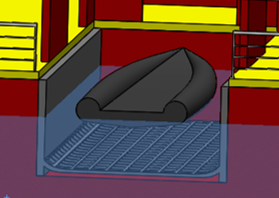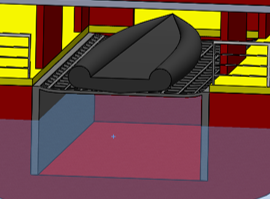Access to fresh water is a basic human need and yet in many areas of the world supplies are limited. Work led by by RIFI engineer and FSI PhD graduate Dr Charles Badoe has investigated a new lightweight and collapsible method of storing water within ship tanks.
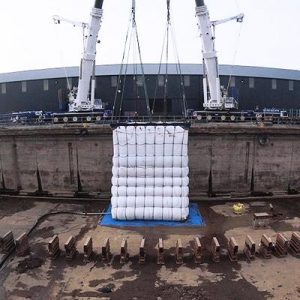
Tag Archives: maritime engineering
Celebrating 50 years of Ship Science
Its fifty years since the first ship science students enrolled at the University of Southampton and to mark this occasion a two day conference is being organised on 4th/5th April 2019. We would like to invite as many Alumini as possible to attend and to contribute their expertise alongside current staff and students in considering how we shape the future of the maritime industry. To find out more follow this link
https://www.southampton.ac.uk/engineering/research/groups/fsi/future-trends-in-maritime-industry.page
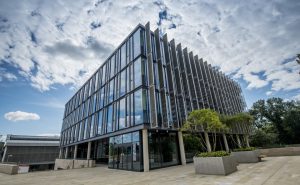
2018 Open days coming soon
The Ship science team will be welcoming visitors this summer and autumn as part of the University of Southampton’s Open Days.

Talks will give opportunities to learn more about the maritime sector and the exciting careers possible with a degree in Ship Science as well as demonstrations in our impressive 138 m long , 6 m wide and 3.5 m long wave and towing tank.
Maritime is a rapidly growing sector where there is significant skills shortage. A recent article by the chair of Maritime UK, Ocean economy offers UK a trillion pound opportunity in undiscovered gold and precious metals highlights what are seen as the many opportunities enabled by the 4th industrial revolution enabled by digital technology. Ship scientists and maritime engineers are at the heart of the application of the new developments in technology ensuring that these can be applied safely and in an environmentally sensitive way.
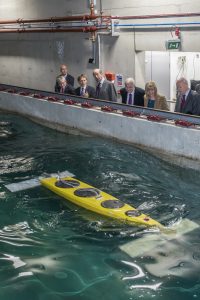
Our staff and students will be on hand to explain and answer any questions you might have.
World Sailing Robot Championship coming to Southampton
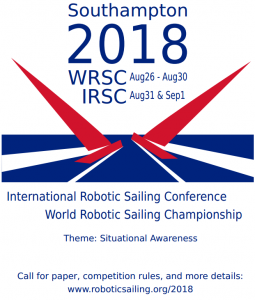 Dr Nick Townsend is the lead academic supporting an enthusiastic team of Doctoral and undergraduate students hostng the World Robot Sailing Chmapionship at the end of August 2018. There are still places for teams to enter so sign up soon!
Dr Nick Townsend is the lead academic supporting an enthusiastic team of Doctoral and undergraduate students hostng the World Robot Sailing Chmapionship at the end of August 2018. There are still places for teams to enter so sign up soon!
Summer Study in Ship Science
We are fortunate to offer three research internships based in the fluid structure interactions group. These are intended primarily for ship science students just finishing their 3rd year and provide an eight week research experience.
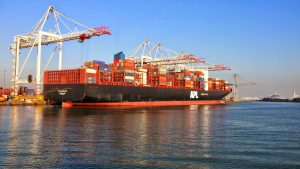
Professor Dominic Hudson is looking for someone to work Prediction of ship power using machine learning
and
Dr Joe Banks has two positions related to his work on the characterisation of the fluid structure interaction of ship propellers
Research Intern into propeller performance –
and as part of the on-going work of teh performance sports engineering lab investigating performance of elite swimmers
Research Intern into Swimming Performance –
If you are interested please contact Dominic or Joe directly.
We also have some PhD opportunities in swimming for students who qualify as suitable for EPSRC.
Experimental testing of sailing hydrofoils
Ben Pickering, a 3rd Year Ship Science student, has been undertaking experimental towing tank testing of a model scale sailing hydrofoil. The aim is to provide validation data for computational predictions of vertical lift, drag and sideforce.

Ben developed a system to measure the vertical forces and used the existing dynamometry to acquire the drag and sideforce. The rig allowed for various angles of yaw, rake and cant of the foil. Below is a video of a single run in the towing tank.
There are limitations to the scale of hydrofoil that can be tested due to the large rolling moments produced compared to normal ship resistance testing. The next stage will be to investigate foiling specific dynamometry for use at larger scales and the measurement of deformations visible in the video above.
High performance computing solves Ship Science challenges
The fifth generation of the University of Southampton’s supercomputers Iridis 5 has come on line. It has 20,000-cores and has a peak performance of 1.3 Petaflops. A ‘flop’ is floatng point operations per second such as adding two real numbers in a second and Peta is 1 quadrillion eg 10 to the power 15 .
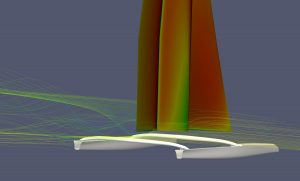
The 20,000-core machine was designed and built by high performance computing (HPC) integrator OCF using ThinkSystem SD530 servers from Lenovo. It has already emerged as one of the most powerful systems in the world, entering the Top500 supercomputer list in November,at number 251.

One of the key users over many years is our own Wolfson Unit for Marine Technology and Industrial Aerodynamics(WUMTIA) who provide a variety of Computational Fluid Dynamics(CFD) services to industry. Dr Sandy Wright, principal research engineer, Wolfson Unit at the University of Southampton comments in an OCF press release. “We have a worldwide customer base and have worked with the British Cycling Team for the last three Olympic games, as well as working with teams involved in the America’s Cup yacht race. In the past 10 years, Computational Fluid Dynamics (CFD) has become a perfectly valid commercial activity, reducing the need for physical experimentation. CFD gives as good an answer as the wind tunnel, without the need to build models, so you can speed up research whilst reducing costs. Iridis 5 will enable the Wolfson Unit to get more accurate results, whilst looking at more parameters and asking more questions of computational models.”
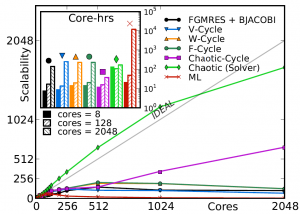
PhD students in FSI are alo important users of the Iridis computers. One example is Dr James Hawkes who recently completed his PhD in collboration with Dr Guilherme Vaz of the Refresco team at MARIN on ‘Chaotic methods for the strong scalability of CFD‘. His work investigated how best to design CFD codes of the future to work across thousands of cores.
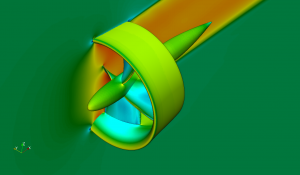
Wind tunnel tests on deep water underwater autonomous glider
As part of the BRIDGES EUH2020 (http://www.bridges-h2020.eu/). research programme the hydrodynamic performance of the external shape was successfully validaterd in the large R.J.Mitchell wind tunnel at the University of Southampton. The glider is designed to carry out long duration autonomous scientific missions down to depths of 3000m. Current underwater gliders are typically limited in depth (~150 m). This is one of the funded projects underway in the maritime robotics laboratory.
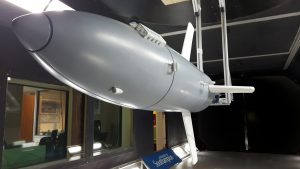
Dr Artur Lidtke , Research Fellow in the Maritime Robotics Lab at the FSI Group, carrie dout the tests over a one week period. Thanks to the size of the facility, hydrodynamic performance of the AUV could be measured at full-scale Reynolds numbers, allowing detailed quantification of drag augments associated with different vehicle configurations. The information will help to validate the design, which has been devised based on fluid dynamic simulations (CFD), allow better estimation of mission endurance, and lead to an improved understanding of performance of such AUVs in the future.
See also: https://twitter.com/BRIDGESh2020/status/956851894449827840
Ship Science students form part of winning concept design team
The Western Joint Branch of the Royal Institution of Naval Architects (RINA) and the Institute of Marine Engineering, Science and Technology (IMarEST) Design Challenge 2017 was won by a University of Southampton team comprising of two Ship Science students and a Mechanical Engineering student. The team of three met whilst working as interns at BMT in Bath during the summer. They struck up a friendship and decided to enter the competition.
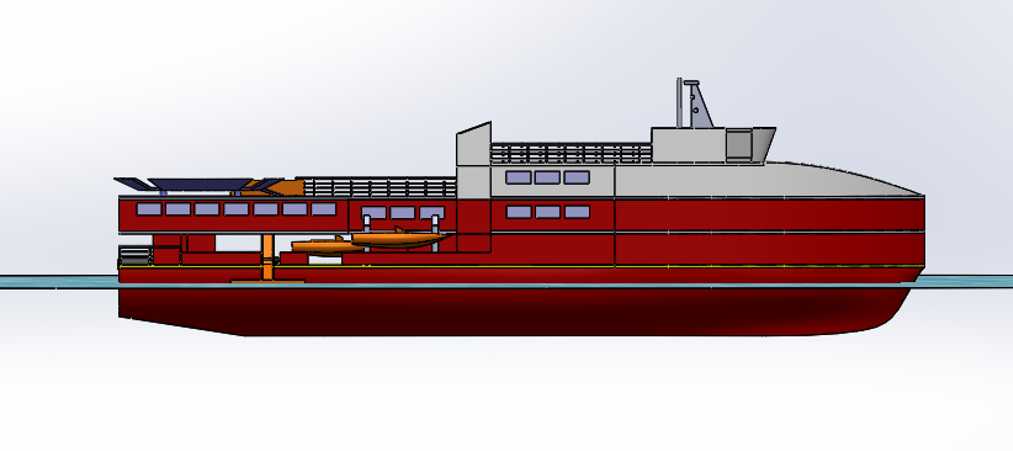
The design brief was to design a life boat capable of rescuing up to 1000 people from the sea at once, in response to the migrant crisis in the Mediterranean. “Team Wessex” was made up of James Lamyman (Part 2 Ship), Edward Wilson (Part 4 Mech) and Paloma Medina (Part 4 Ship) who was the team leader. Their mentor was Paul Nichols from Lloyd’s Register. The competition involved preparing a Poster and presenting their design concept at an event held on the 4th December at the University of the West of England.
“Team Wessex” were crowned champions from a group of 6 entrants, two from BMT, one from each of SSMG, Stellar Systems, MoD DESG and “Team Wessex”, who walked off with the £1000 first prize.
Paloma said “Sometimes it was challenging to combine University work and the lifeboat design work but we learned a lot from it and it was worth it. It was like doing a second concept design.” Part 3 Ship Science students do a concept design as part of their degree.
The entry from “Team Wessex” was a 65m monohul with various innovative rescue capabilities:
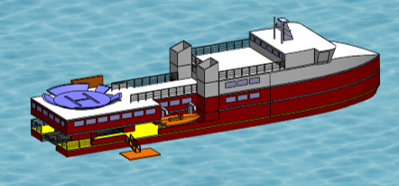
- It can seat 1000 people
- The vessel concept includes a well deck at stern for rescuing the ribs in which refugees tend to travel or collect the boats rescue ribs when they carry rescuees.
- Two high speed ribs at both sides launched,
- Side platforms which can be lowered to the water for rescuing purpose
- Vessel design integrates a processing system for rescues.
Ship Science students take part in Rolex Fastnet race 2017
Maritime Engineering and Ship Science students were scattered through the 2017 Rolex Fastnet Race fleet.
Started in 1925 when seven yachts set sail from Ryde to the Fastnet Rock to arrive in Plymouth, the infamous post-race dinner heralded the foundation of the Ocean Racing Club. Today the Rolex Fastnet Race is the most popular of the world’s classic 600 mile offshore races, attracting a diverse, international fleet of IRC yachts and grand prix classes such as the IMOCA 60s, Class40s and the MOCRA-rated multihulls.
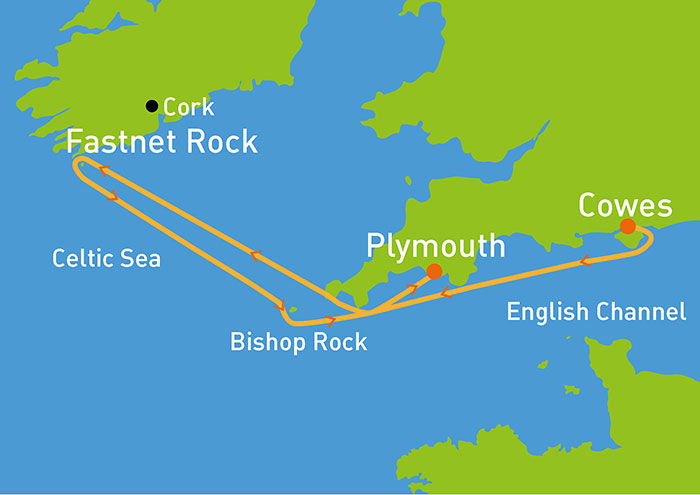
Jamie Diamond, who graduated with a first class MEng in Ship Science this summer, was the top placed student on Lady Mariposa, a Ker 46. They finished 3rd overall and 2nd in IRC class zero.

Further down the fleet James Collingwood (who also graduated this summer) sailed on the X-332 Alexa, Juliette Bataille (about to enter her final MEng year) sailed on the J122 Juno, Arthur Penet (MSc) sailed on Night Owl II a MAT 12, Duccio Ducci (MSc) on the J109 Jybe Talkin’ and Jan Chudzik (MSc) on White Knight of Wessex a HOD 35.
In addition to our students, Etienne Gauvain, from the Wolfson Unit, based at the Bolderwood Innovation Campus, sailed on the JPK 10.10 Foggy Dew.
Well done to all that took part!

